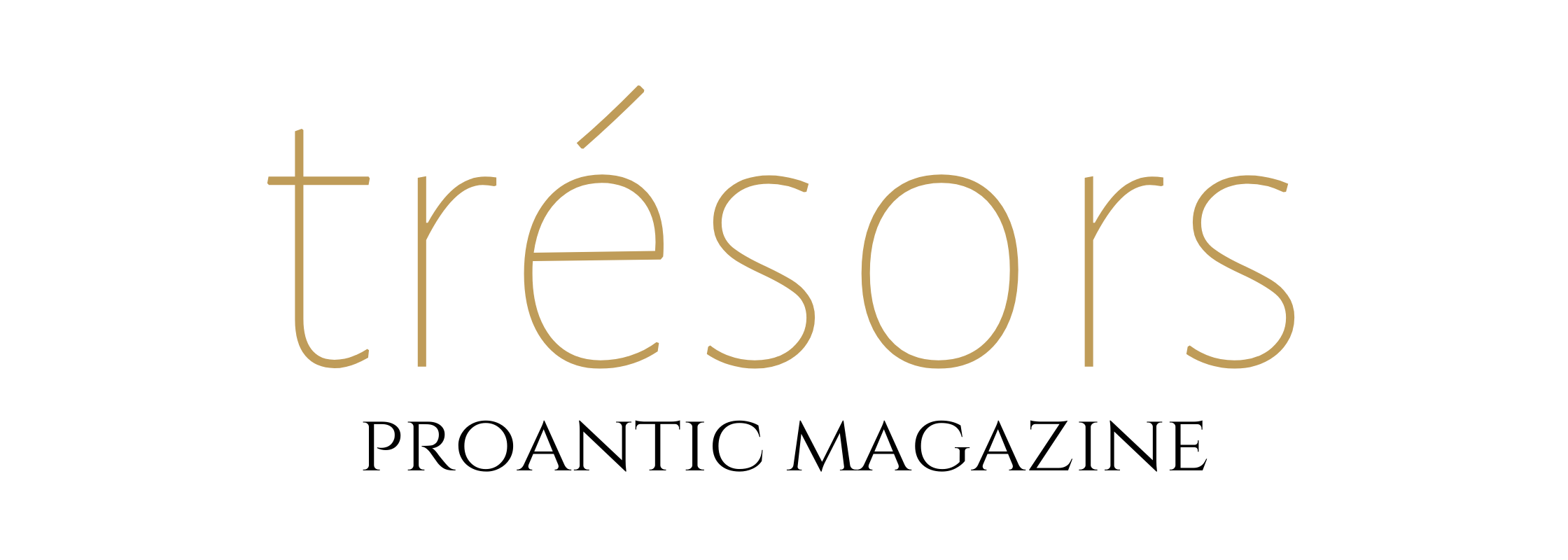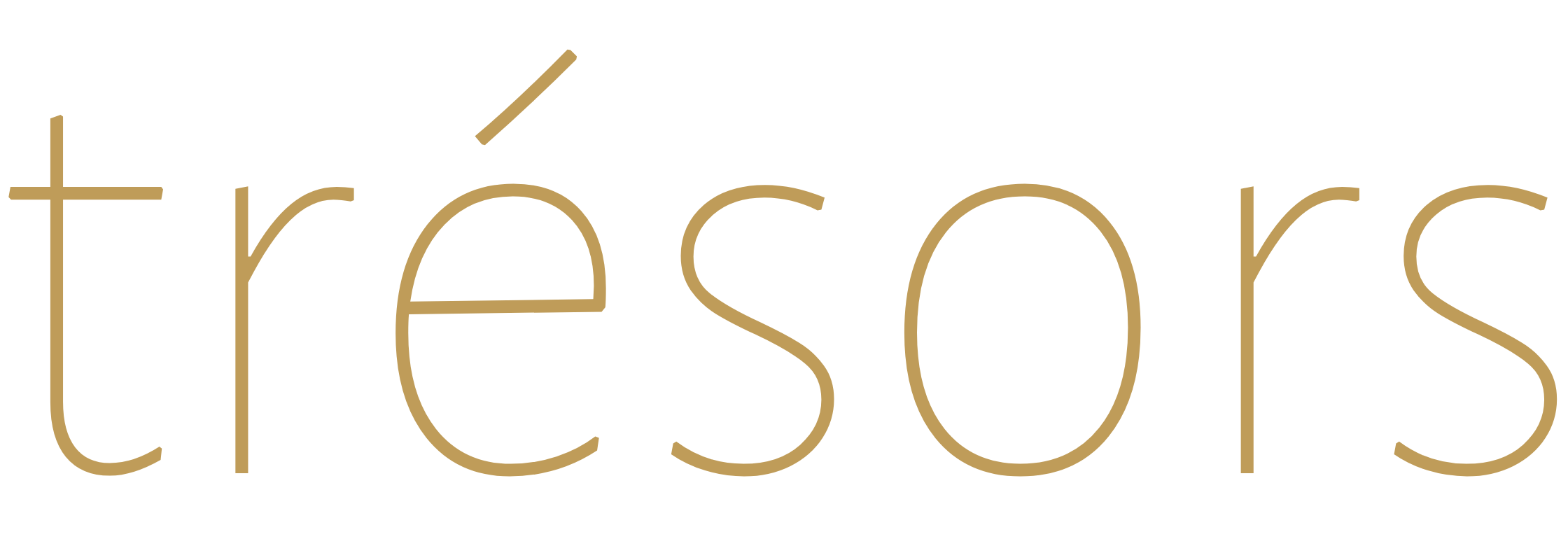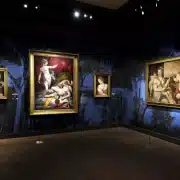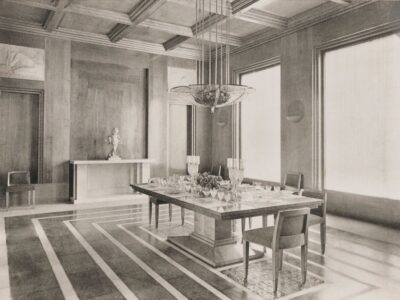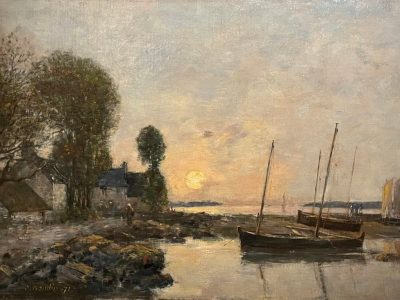If you are a fan of rattan, bamboo, or rope furniture, getting to know Audoux-Minnet (often spelled Audoux-Minet) is a must. This brand of furniture had its heyday from the 1940s to the 1960s.
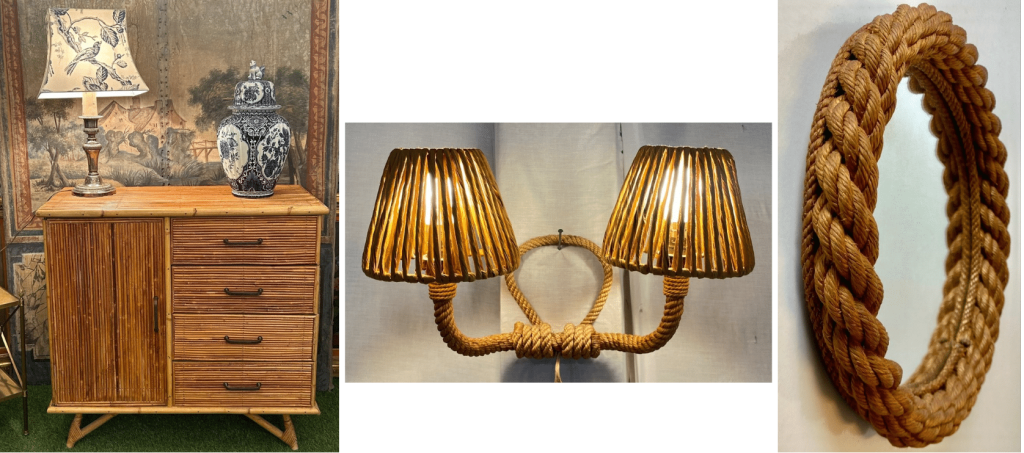
From left to right: © Des pulls dans ma commode, © Vivement Lundi, © Patrick Etienne Antiquités
The Audoux-Minnet store (and creative headquarters) was located on the French Riviera, first in Cannes, then in Golfe-Juan from 1942. Audoux-Minnet is sun-kissed Mid-Century Modern. Maybe some Mediterranean grains of sand will escape when you install their pieces in your home…
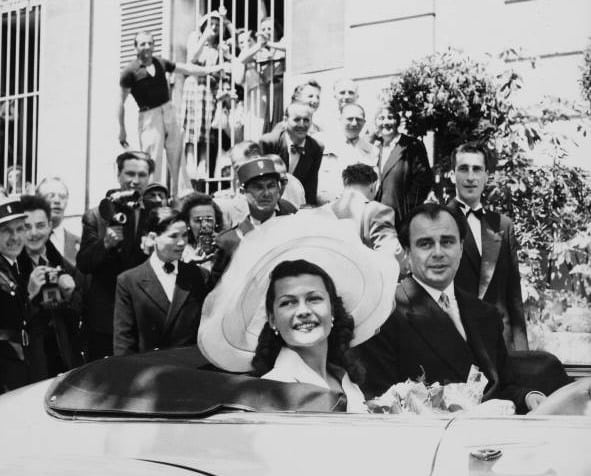
Rita Hayworth and Prince Aly Khan in a Cadillac on their wedding day in Vallauris Golfe-Juan in 1949. Public Domain
Audoux-Minnet’s success coincides with the tourism expansion of the French Riviera. People wanted to bring a piece of holiday back to their homes. Even Hollywood celebrities brought glamour to this corner of France. Rita Hayworth’s wedding in Vallauris Golfe-Juan in 1949 put this small city on the map beyond France.

Audoux-Minnet logo with the adorable black kitten for a pun on Minnet and “minet” meaning “kitty” in English. It also mentions the location of their furniture store in Golfe-Juan. © DZ Galerie
Be aware that Audoux-Minnet is often misspelled as Audoux-Minet, likely due to the similarity between “Minnet” and “Minet” (meaning “kitty” in French). This confusion is understandable, especially since they used a black kitten logo on their label tag. Audoux-Minnet sounds like “Au doux minet” meaning “At the soft kitten’s”, an endearing pun.
Rattan Furniture With Un Air de Riviera
The Audoux-Minnet brand was born from the association (and marriage) of Adrien Audoux and Frida Minnet. Frida’s father was a rattan furniture maker in Montreux, Switzerland, explaining the original predisposition of the young couple for rattan furniture.
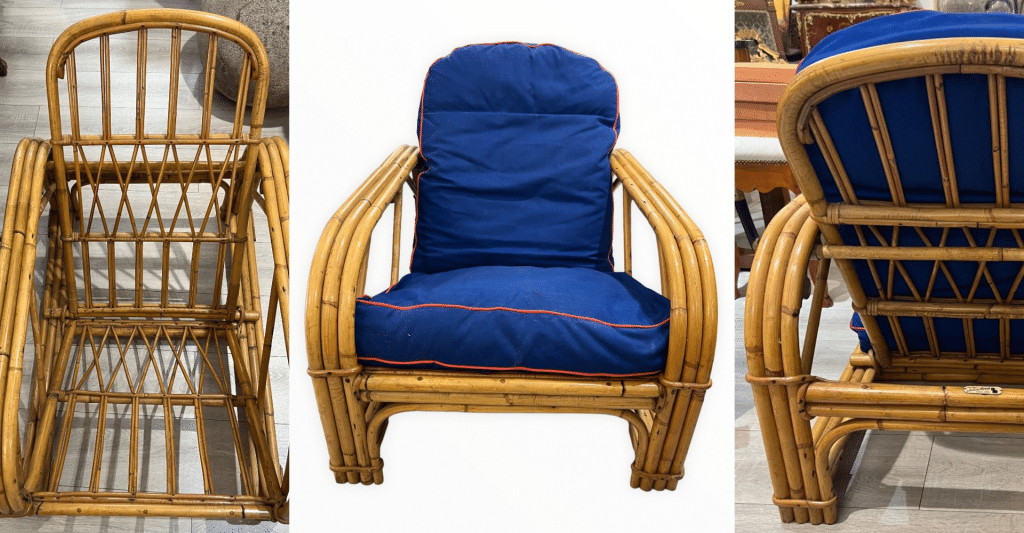
This rattan reclining chair offers three positions for the backrest. It still carries the Audoux-Minnet metallic label on the back stretcher. © DZ Galerie
Rattan has a similar look to bamboo, especially when large canes are included, which is typical for the legs of tables and sideboards. It reinforces the brutalist and exotic style. The Tiki pop culture so in vogue in the late 1940s and 1950s likely influenced the allure of their pieces.
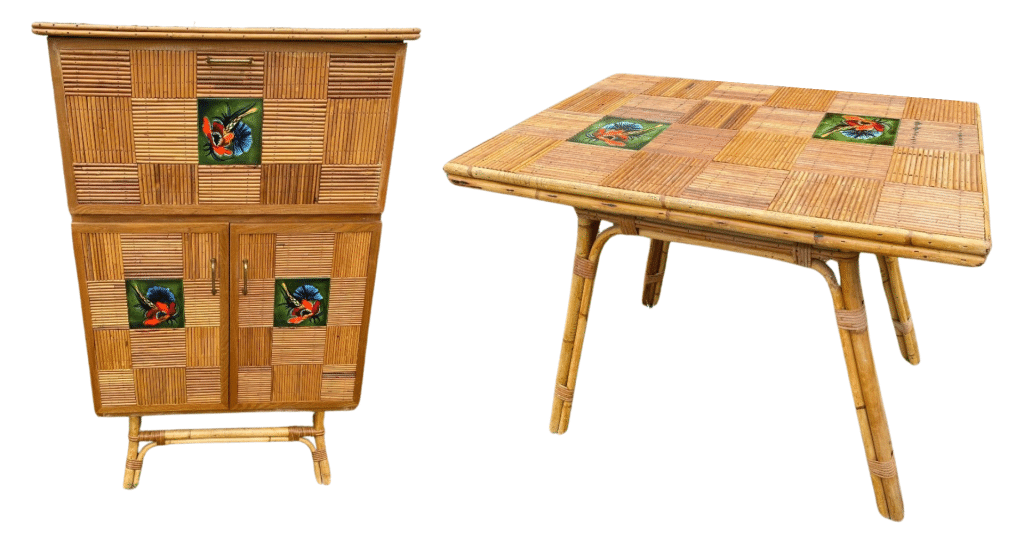
Bar cabinet with a matching table by Audoux-Minnet. Bamboo, rattan, and ceramic tiles with flowers. © B R Antiquités
Some of their furniture integrates ceramic tiles—nothing surprising as Golfe-Juan borders Vallauris, a town renowned for its ceramics. Picasso even lived there from 1948 to 1955 and experimented with this creative outlet that was new to him, which contributed to the revival and rise of Vallauris ceramics.
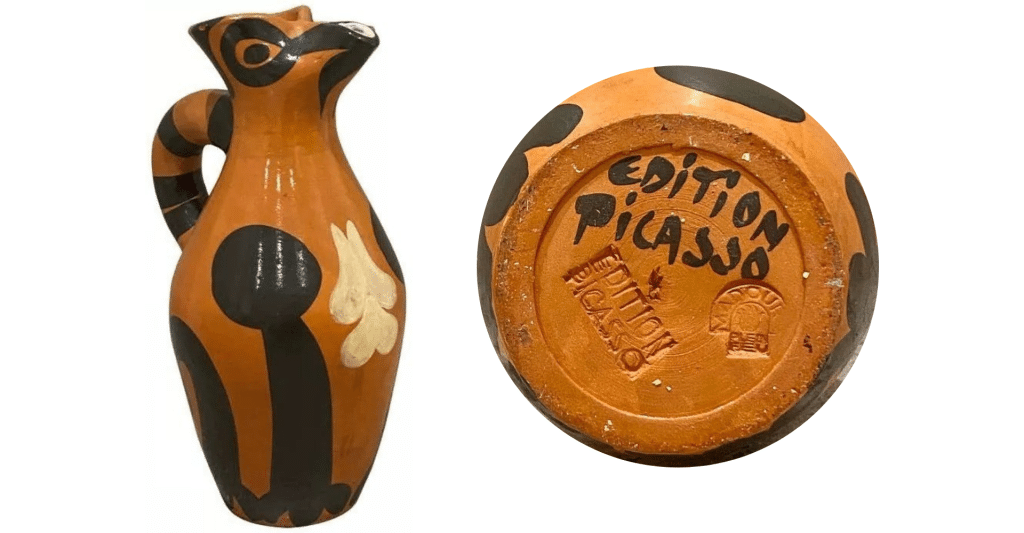
The “Yan” pitcher created by Pablo Picasso in 400 copies in 1952 with Madoura, Vallauris. © Bushells Antiques
Audoux-Minnet collaborated with various ceramists in Vallauris—including Georges Chassin or the workshop and store “La Roue”.
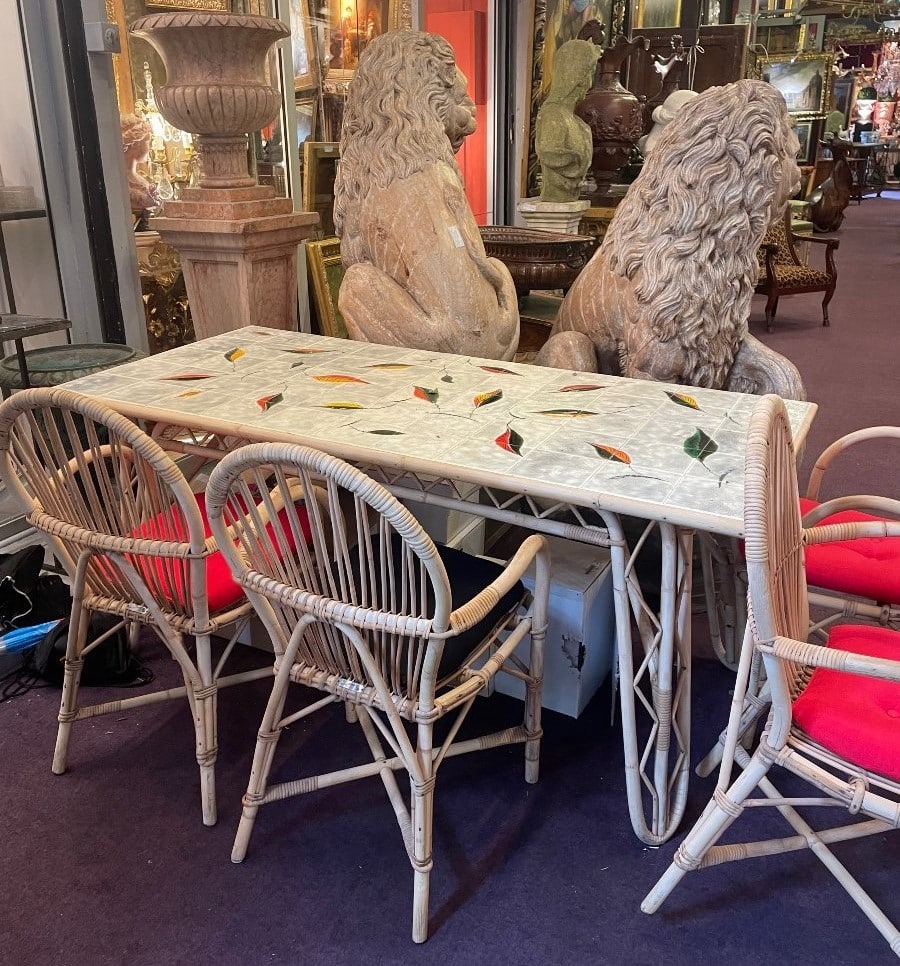
Two chairs with the Audoux-Minnet label and a table with ceramic tiles by Georges Chassin. © Caroline Pons Antiquités
Their Iconic Chairs in Hemp Rope and Beech Wood
The specificities of Audoux-Minnet furniture lie in simple and natural materials leveraging modernist and brutalist elements of style. A distinct influence is drawn from vernacular furniture, yet always adapted to modern taste.
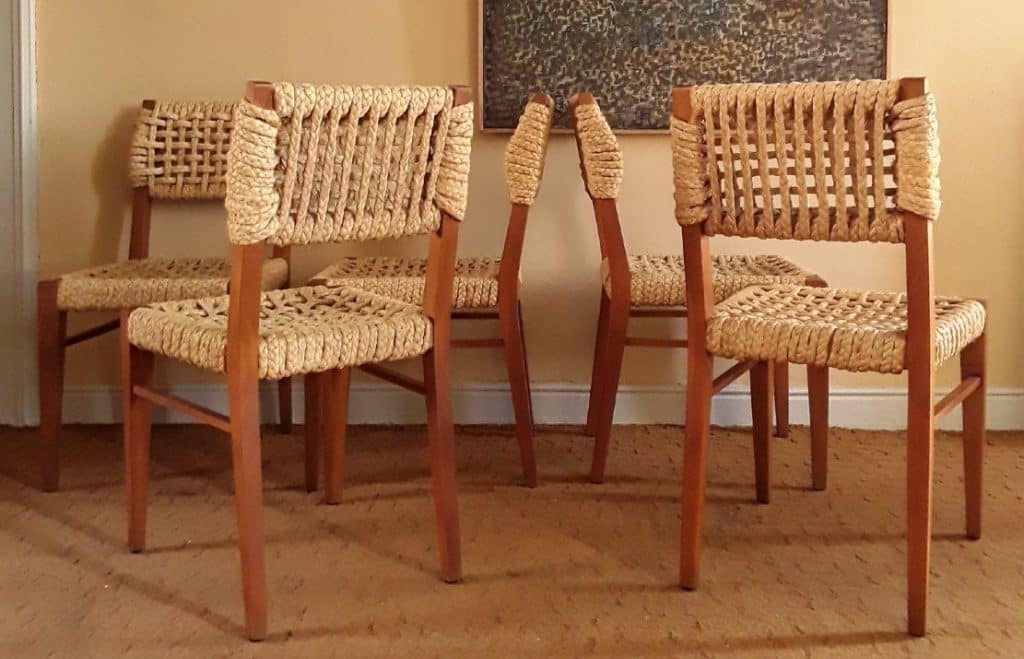
Five Audoux-Minnet chairs in woven hemp rope and beech wood. Produced by Vibo in the 1950s. © Antiquités Martin
The use of hemp rope is their primary hallmark. While their rattan furniture does not leverage much wicker weaving, they repurposed the wicker style to adapt it for hemp ropes. It is an ingenious approach, possibly influenced by Danish cord weaving as well, as in the late 1940s, the paper cord was brought to the international design front stage by Hans Wegner (also a modernist designer).
Their most emblematic model is a cantilever chair crafted from beech wood and hemp rope, produced by Vibo in Vésoul. Alvar Aalto pioneered bent plywood and laminated wood to create the cantilevered N°31 in 1932.
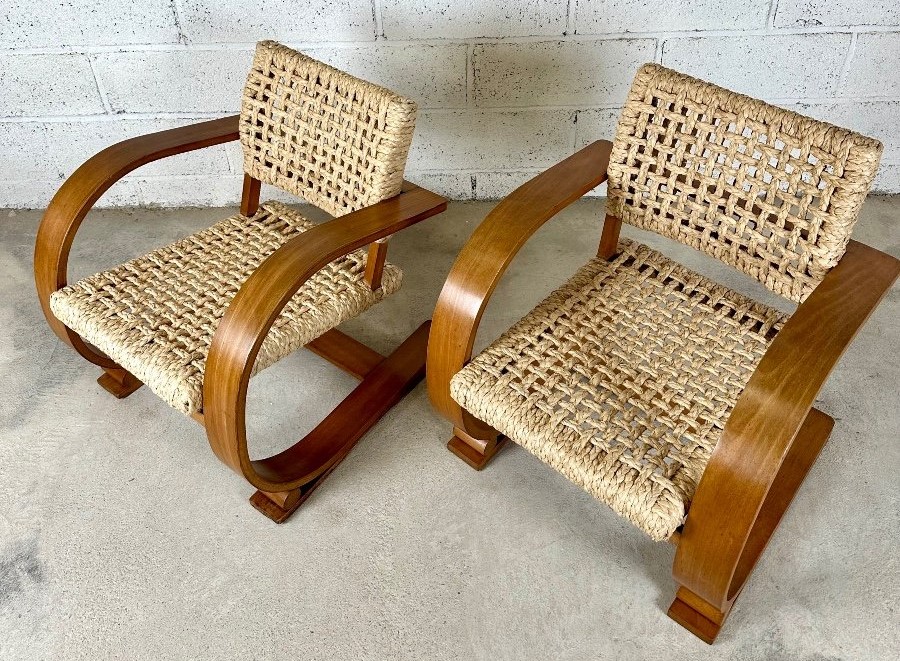
The iconic cantilever chair by Audoux-Minnet made by Vibo Vésoul. In beech wood and woven hemp rope. © Rennes Antiquités
In the 1950s Audoux-Minnet’s version of a cantilever armchair, adding a cylinder between the bottom of the bent legs and the supporting base, along with the parallel leg stretcher and back support, creates a sophisticated interplay between straight and curved lines.
For a Perfect Nautical Decor: Rope Lighting and Home Accents
Incorporating nautical-themed accessories helps create a coastal atmosphere in a home. With a store by the sea, the designers Frida Minnet and Adrien Audoux had ample inspiration around them from which to work.
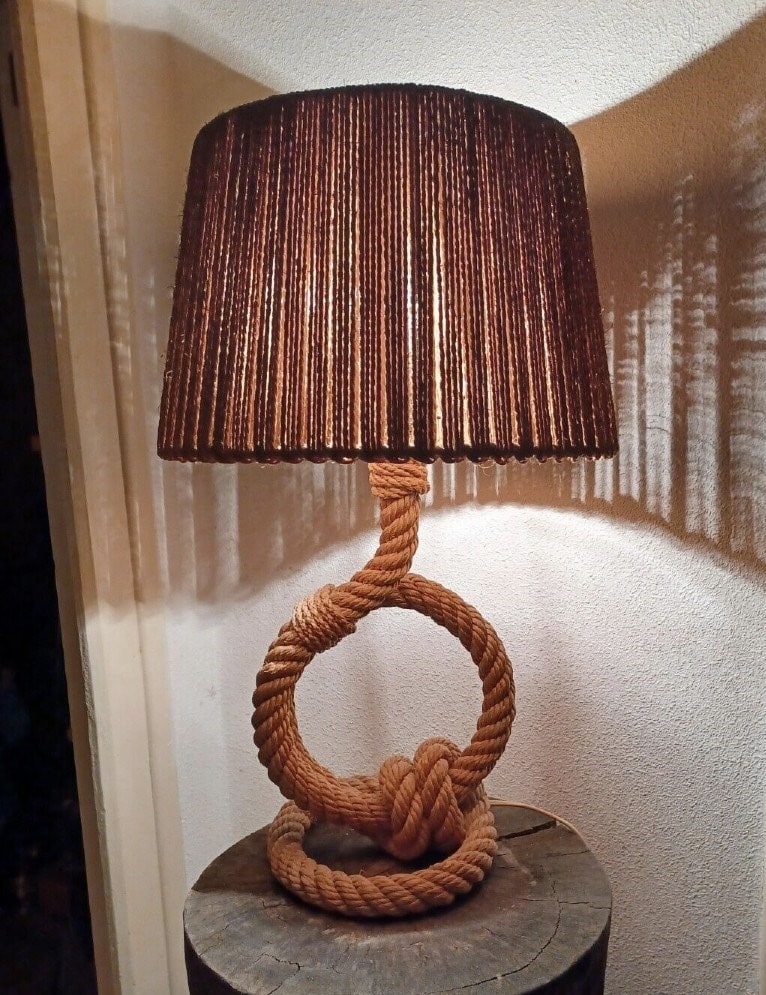
Rope lamp with original rope lamp shade by Audoux Minnet. © La Maison Bananas
Ropes are omnipresent for boats and sailing. Consequently, they serve as the central decorative material in the lamps and objects Audoux and Minnet created, never failing to give them a modern style. For example, the traditional glass fishing float is stripped of its usual net although integrated into ropes.
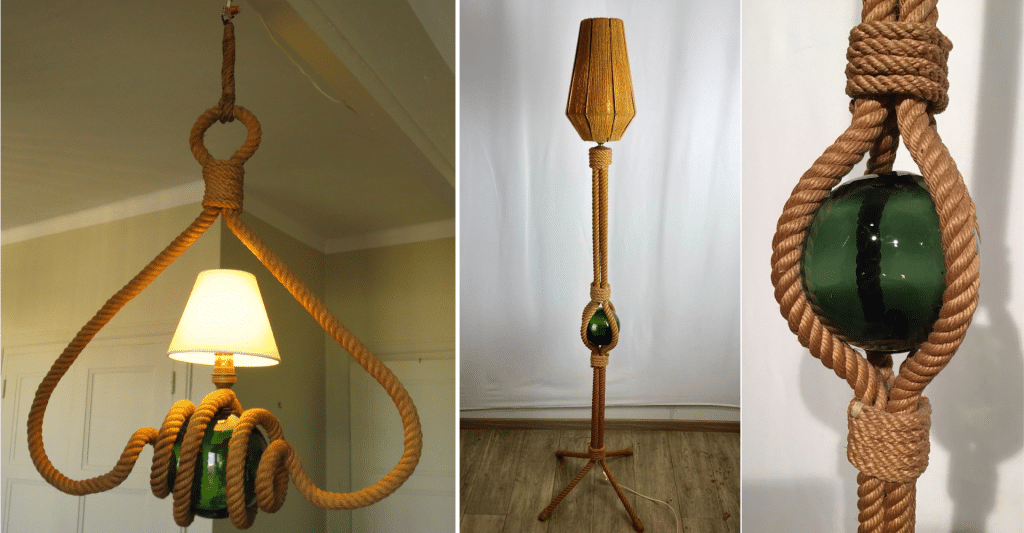
These Audoux-Minnet rope lamps incorporate green glass, fishing float style. Left: Pendant light (© Les Billes de la Gamine). Right: Floor lamp (© Patrick Etienne Antiquités).
It is difficult to accurately attribute objects to Audoux-Minnet, as their brand labels have only been found on furniture, such as tables and chairs. Additionally, no catalogs of their creations, which were exclusively sold in their Golfe-Juan store, have been found.
They applied their creativity to a wide variety of functional and decorative objects made with great care: lamps of all types (as shown above) but also mirrors, magazine racks, barometers, trays, coat racks, frames, etc.
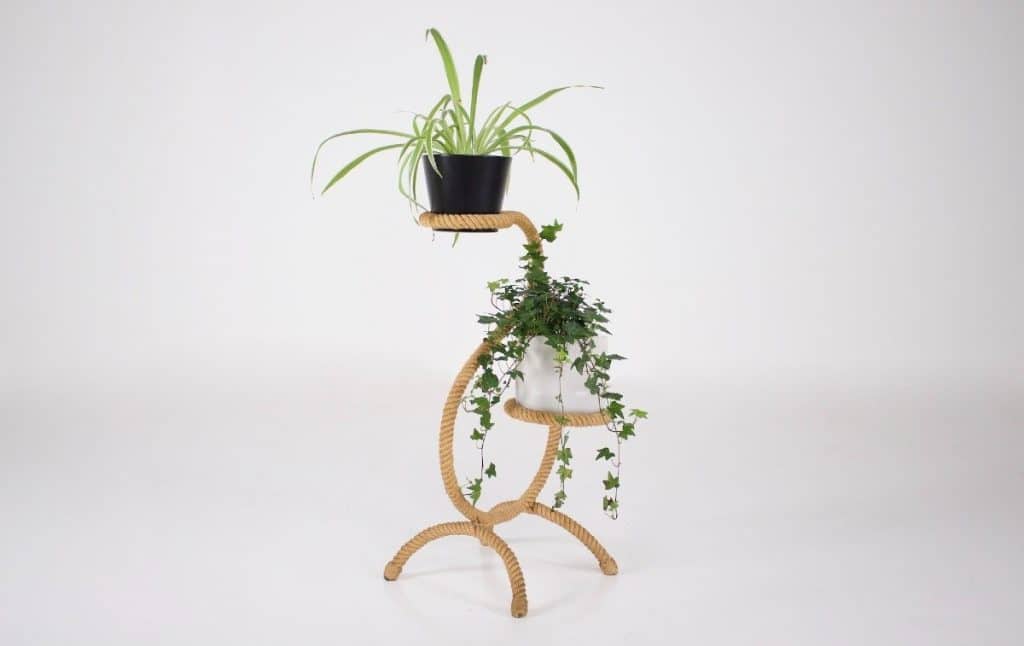
Rope plant holder by Audoux-Minnet. © Vintage Addict
In France, their impact on the creation of rope objects was so significant that their name is often mentioned when such vintage items are displayed. From 1965 until it closed in the 1990s, their store was taken over by Pierre Bianchi, but remained truthful to its original spirit.
You May Like
Audoux-Minnet | Louis Sognot | Modern 20th Century | Brutalist | Rattan | Rope | Bamboo | Vallauris
